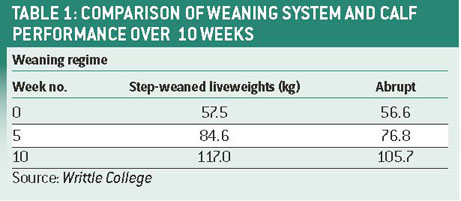Weaning on concentrate intake is better than milk alone
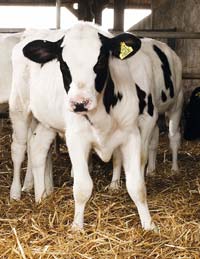
Weaning the dairy calf is not just about restricting and removing milk from the diet.
Key to a successful weaning is not just about a calf’s age and number of days on milk more importantly it’s about the amount of solid feed intake, according to Volac’s calf specialist, Maggie Gould.
She says to reduce stress to an absolute minimum, weaning should take place when a calf is consuming a minimum daily target of one kilo of solid feed for three consecutive days.
“Concentrate intake is vital in developing the rumen. From birth to eight weeks, it is not only the rumen volume increasing, but its structure changes as well. The muscular wall develops finger-like projections called rumen papillae which grow rapidly to provide a large surface area through which essential nutrients can be absorbed. And one of the key drivers to successful rumen development is early solid intake,” she says.
A healthy rumen which has developed in line with increasing intake of high quality starter feed means calves will not experience set-backs at weaning. “A high quality starter feed with coarse starch and digestible fibre will stimulate rumen volatile fatty acids and papillae growth, together with ad-lib, fresh, clean supplies of both straw and water,” explains Mrs Gould.
However, a recent survey carried out by Writtle College among 90 dairy farmers indicated when it came to weaning criteria, as few as 6% placed any emphasis on concentrate intake. The number of days the calf had been fed milk followed by its age were the two over-riding factors that determined date of weaning.
“These results are surprising,” comments Mrs Gould. “It seems farmers are not always taking account of the fundamental importance of concentrate feed intake in the calf’s first few weeks. Concentrate intake stimulates more rapid growth and development of rumen papillae, and the rumen microbial population, ensuring maximum use, absorption and transport of nutrients and a smoother transition at weaning.”
And one way farmers can increase feed intake prior to weaning and increase growth rates is by step weaning. Results from Writtle College showed step weaning increased calf liveweight gain by 20% compared with traditional abrupt weaning, resulting in savings of 18p/kg liveweight gain worth almost £10 a calf made over the 10-week rearing period.
All calves in the trial were fed two-and-a-half litres twice a day for the first three weeks and one group continued on this regime until abrupt weaning after five weeks whereas the other went on to a step-weaning system with two-and-a-half litres fed once a day during week four, reducing to two litres fed once a day during week five. The calves were offered 17% protein calf starter feed ad-lib throughout the five-week period.
“The step-weaned group began to show a weight gain advantage immediately after the milk was restricted to one feed of two-and-a half litres a day in the fourth week and concentrate intake increased. This trend was maintained up to and after weaning,” explains Mrs Gould.
She says reducing milk fed at this stage increased the amount of concentrate eaten, speeded up rumen development and thus enhanced growth rate. “By the end of the 10-week study, the step-weaned calves averaged 11.3kg heavier than those abruptly weaned – a substantial and cost-effective improvement in performance that cannot be ignored.”
However, step weaning does require more planning, particularly when large numbers of home-bred calves are involved, she adds. “Under these circumstances, a simple and effective solution would be to introduce a computerised feeding system which benefits from complete control over individual calf feeding programmes and an automated step weaning curve to gradually reduce milk intake.”
Different regimes in pictures
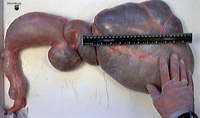 |
|---|
| Milk and concentrate exterior |
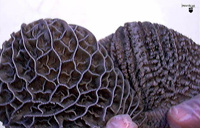 |
|---|
| Milk and concentrate interior |
 |
|---|
| Milk and hay rumen interior |
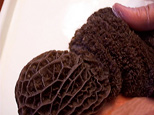 |
|---|
| Milk and concentrate and hay rumen interior |
 |
|---|
| Milk only rumen exterior |
 |
|---|
| Milk only rumen interior |

